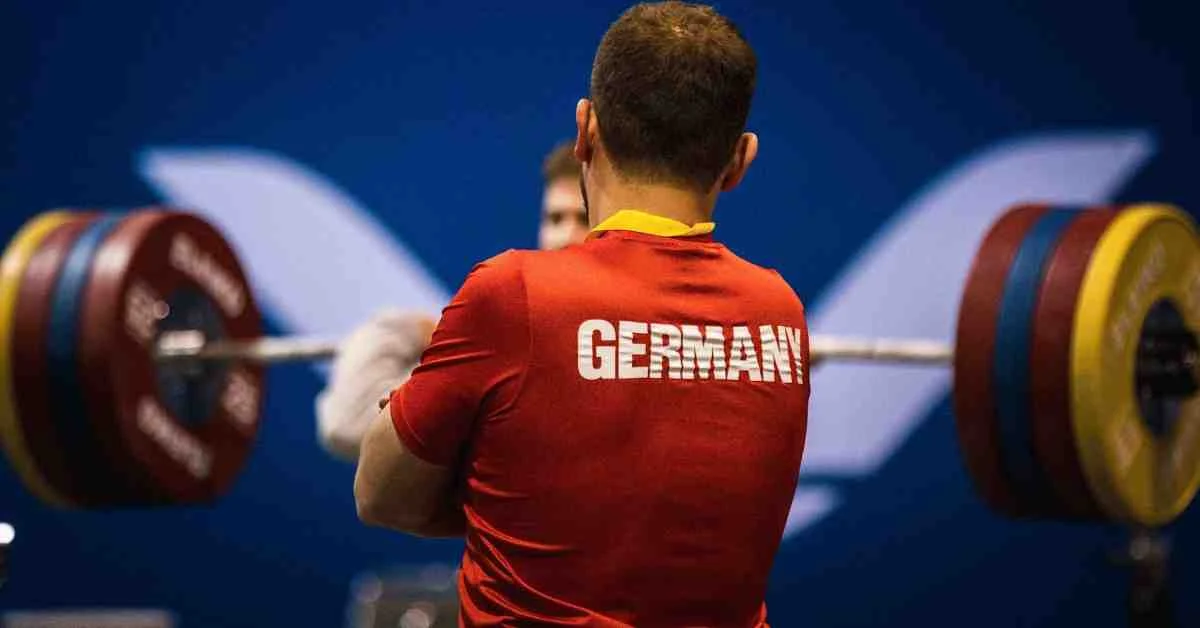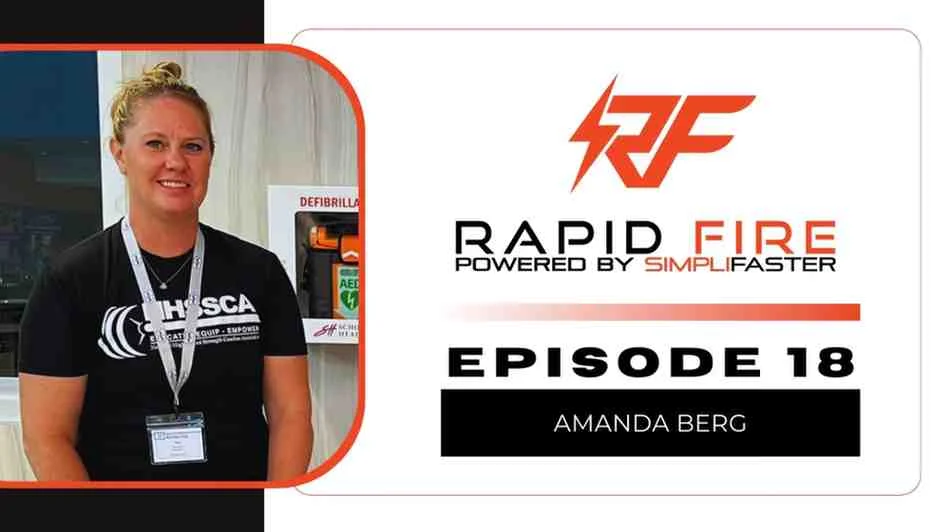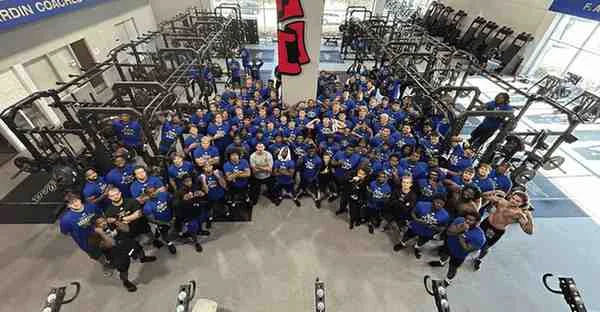[mashshare]
Kurt Hester joined the Louisiana Tech family after serving as a National Director of Training for the D1 Sports Training Center in Nashville, Tennessee, since 2008. He worked with several professional athletes from leagues including the NFL, MLB, NBA, MLS, and NHL, as well as the NFL Combine classes. One NFL player notable to Tech fans who Hester has worked with is former Bulldog quarterback Luke McCown.
Concurrent to his tenure at D1 Sports Training, Hester also worked as the Director of Training at the Manning Passing Academy, where he designed a training program for over 1,300 high school athletes and delivered a specific training seminar for high school and college coaches.
Freelap USA: Your book, “Rants of a Strength & Conditioning MadMan,” is extremely popular with coaches because it covers the reality of being a D1 coach. Could you explain why you wrote the book, and how it can help guide the profession forward? You are also vocal about athlete safety—can you explain how all of this connects together to make the coaching career better for the future?
Kurt Hester: Initially, I sat down to write a book on the acquisition of skill for American football. Every morning, I wrote freely for 30 minutes, and what I put on paper had nothing to do with the topic that I was supposedly writing on. What I was putting on paper were rants over things I read on social media that had relevance to the field of performance training. After a month of writing, my focus switched from skill acquisition to rants on the field of performance training and how ludicrous it had become.
The book is honest and somewhat jaded because I have been in the field for 34 years, and I have been training for 44 years. I have been in the field since its infancy, and even though we are in the technological age of performance training, we are regressing as technical coaches. I put on paper all the negative and unprofessional instances that I have been a part of.
Even though we are in the technological age of performance training, we are regressing as technical coaches, says @TheKurtHester. Share on XIn retrospect, I was lashing out just as much at my past behavior as I was at some coaches’ current behaviors. I hope that, when reading this book, other performance coaches can see the light and learn from my mistakes, as well as the mistakes that others are currently making. More importantly, for this field to change, I hope college administrators and sport coaches will read it and get an inside view of the field and how performance coaches feel about their interactions. Only then will the field begin to progress.
When an athlete commits to your program, they also commit to you as a coach and leader. So, in essence, they hire you and their family hires you. As a paid employee, you have a responsibility to that family to keep their child safe. When it comes to the safety of the athletes in your care, you only have room for loyalty to one person—the athlete.
Most coaches, especially young coaches, will bow down to the sport coach in most instances for fear of termination and due to an undying sense of loyalty to that sport coach when it comes to the safety of an athlete. Add to this the fact that most strength staffs do not have the backing of administration on any matters related to the sport coach-strength coach relationship. The more that athletes, parents of athletes, sport coaches, administrators, and young performance coaches understand the situations and decisions that precede injuries, the safer the field will become.
Freelap USA: You are one of the older coaches still in the trenches. What keeps you going to rise and grind year after year? What keeps your passion going to keep your hands dirty when most are long gone and moved out of the coaching profession?
Kurt Hester: When you are a young performance coach, you are consumed with moving up the ladder and getting paid. Usually, it is a slow and arduous process, and the external rewards do not come fast enough. Many coaches leave the field before age 40. I have always been an intrinsically motivated human by nature, and what has always driven me in this field had nothing to do with money or fame.
As a young coach, I met up with a player who was four years removed from his playing days and not doing well in life. That meeting made me sick to my stomach. I felt terrible as a human and wondered what I could have done during his playing years to help him succeed after his athletic career was over.
As an athlete-centered coach, I vowed to insert myself into the lives of the athletes in my care and do more for them outside of the world of sport, says @TheKurtHester. Share on XThat day is the day that I became a more athlete-centered coach. I vowed to insert myself into the lives of the athletes in my care and do more for them outside of the world of sport. I guess that is why I have never burned out, and I have sustained being relevant in this field while others are long gone.
Freelap USA: Reputation-wise, you are seen as a coach who is well-rounded and who provides a holistic program. If you were to give advice to your younger self, what would have you done differently in the past? Every coach makes mistakes, but with so many years of experience, your perspective must be loaded with wisdom.
Kurt Hester: If I had the opportunity to give advice to my younger self, the first thing I would do is punch him in the throat so that I would have his attention. Knowing myself, that’s what it would take to initially get me to listen. Now that I set the tone with this guy, this is the fatherly advice I would give him:
- Just because you made it to the SEC and were on two national championship teams does not mean you are a quality coach. They won in spite of you, not because of you. You have a lot to learn, and you need far more experience before you will become of any use to the athletes in your care.
- Spend more time out of the weight room and training with your athletes to develop a stronger relationship, but still maintain a coach/athlete relationship over a friend/athlete relationship. The friendship will develop quickly when their athletic career is over.
- Trust your eyes and your gut. They will never fail you in training, relationships, or life.
- Spend as much energy and thought on building team culture as you do on programming. If your culture is weak, your programming—no matter how good it is—will never be fully implemented.
- The sole pursuit of max strength numbers is a disservice to the development of your athletes.
- Develop your athletes’ abilities to move, and move fast, above everything else in training.
Freelap USA: Having seen the rise of junk sports technology, you have kept competitive with athlete development by understanding training at its core. Can you go over what the average coach should be learning? It’s not that science isn’t important, but the ability to guide a program with teaching is paramount.
Kurt Hester: With the advent of sports technology and the fake juice strength and conditioning coach, the ability to technically teach basic lifting technique as well as skilled movement on the field is a lost art. In the past seven years, I have interviewed far too many coaches who have experience in multiple programs that they cannot technically coach. They make excuses like: “I don’t like Olympic lifts,” “I don’t like being out on the field” or “I didn’t run track,” or worse, “I came from a program with very little speed/COD involvement.”
Young coaches have become number watchers and incessant yellers with no ability to use their eyes and teach. The essence of coaching is the ability to communicate and teach. I look at the best track programs in the world, and I don’t see an overabundance of sport tech or gimmick training modalities being used to succeed.
The only way to become great in this field is to teach the basics unmercifully every day in the weight room and on the field, says @TheKurtHester. Share on XI would be thrilled to find a coach who teaches an athlete how to set up on any lift correctly and then holds that athlete accountable to that setup technique on a daily basis. The only way to become great in this field is to teach the basics unmercifully every day in the weight room and on the field. No matter how frustrated you become with teaching the basics, you have to stay disciplined in your efforts to fight boredom and the labor-intensive athlete.
Freelap USA: Conditioning for football is still a Wild West with NCAA and NFL athletes. Can you share how you evaluate how much fitness is enough? Some coaches feel it’s all about size and speed, while some still see the value in extra work or different work outside of practice. Any thoughts here?
Kurt Hester: Evaluating conditioning readiness for football starts with understanding the physiological processes that would affect different positions in the game, as well as the work-rest ratio of the game itself.
How much glycolytic work the football staff injects into your conditioning program is also a concern. If you are relegated to holding your athletes to an antiquated conditioning test, it could hamper the RSA of your skilled athletes and the strength gains in the weight room of your power athletes.
Holding your athletes to an antiquated conditioning test could hamper the RSA of your skilled athletes and the strength gains in the weight room of your power athletes. Share on XIf you don’t let your athletes decondition aerobically too far after spring ball, it is easier, and it does not take as much effort to get them ready for an 80-play-a-game, 12-week season. If you are starting from scratch in June, then there has to be some give somewhere else in training to save the athlete from overtraining and injury. It’s hard to get your athletes stronger, conditioned to play eight fast or powerful plays, pass a conditioning test, and do 2-3 days of skill or seven on seven work.
As a coach, it is a balancing act to use your technology properly to evaluate where your athletes are on a daily basis. Every training day has residual effects on the athlete in a multitude of ways throughout the training cycle. You need to learn to back off in certain areas on a daily basis throughout the training cycle to keep your athletes healthy and safe.
[freelap-share]
[mashshare]





